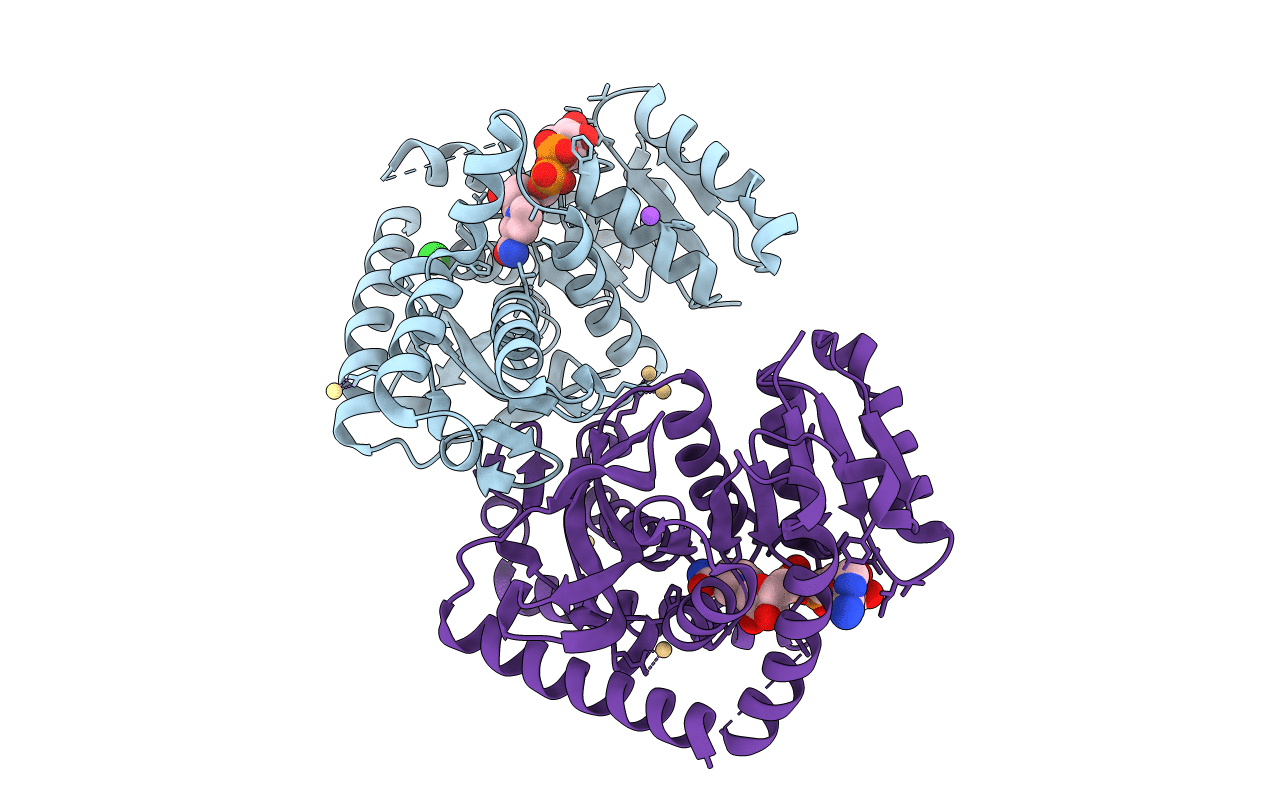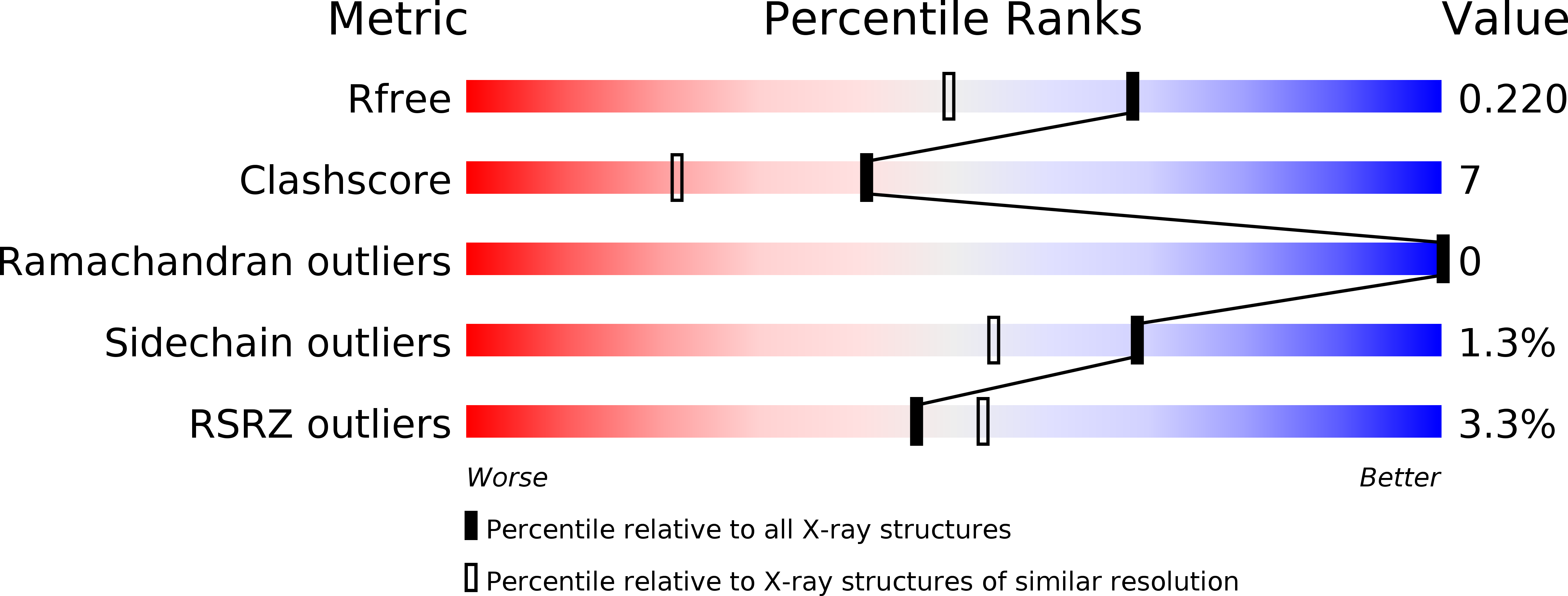
Deposition Date
2003-10-27
Release Date
2003-11-05
Last Version Date
2024-10-16
Entry Detail
PDB ID:
1UR5
Keywords:
Title:
Stabilization of a Tetrameric Malate Dehydrogenase by Introduction of a Disulfide Bridge at the Dimer/Dimer Interface
Biological Source:
Source Organism:
CHLOROFLEXUS AURANTIACUS (Taxon ID: 1108)
Host Organism:
Method Details:
Experimental Method:
Resolution:
1.75 Å
R-Value Free:
0.22
R-Value Work:
0.19
R-Value Observed:
0.19
Space Group:
P 31 2 1


